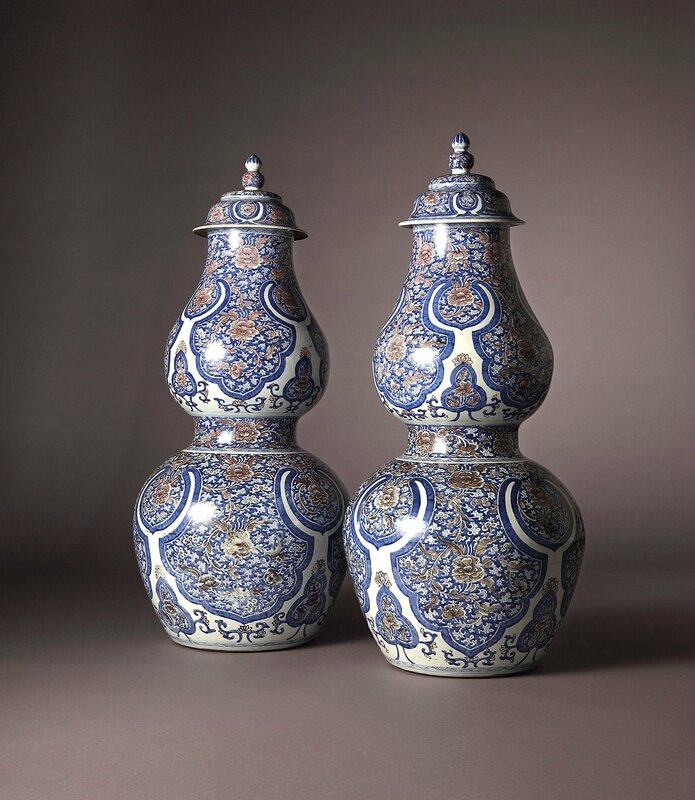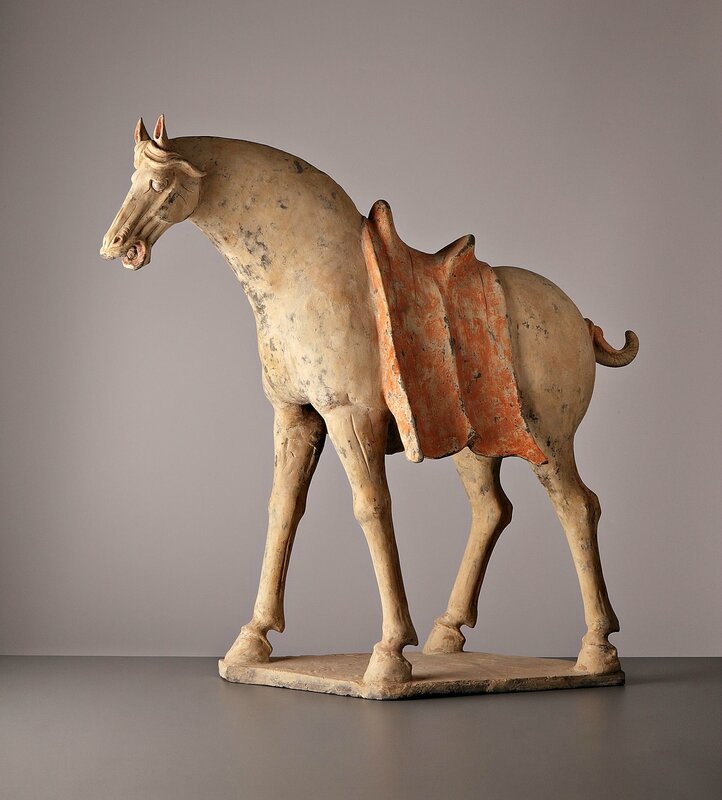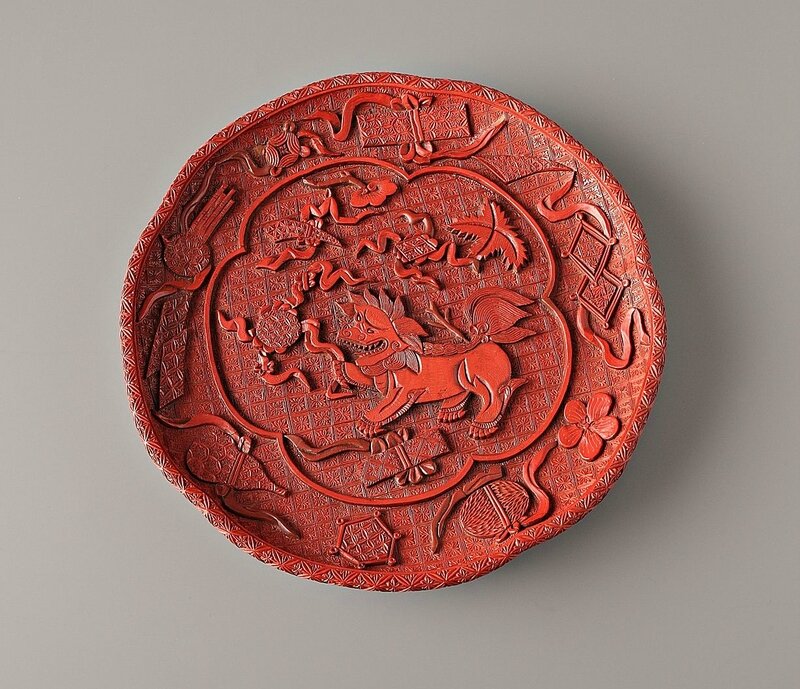Vanderven Oriental Art at TEFAF Maastrich
Monumental seated Buddha, China, late Yuan-early Ming dynasty, 14th century. Gilded and painted stucco on a wooden base, 180 x 81 x 70 cm. Weight circa 350 kg © Vanderven Oriental Art.
This Buddha is seated in the 'padmasana' lotus position with his hands in 'dhyana' mudra the gesture of absolute balance. The figure emits a sense of vastness and serenity in meditation. Simply dressed in a long, low slung robe which covers his legs, exposing his chest and tied at the waist. His shoulders are covered by a long cloak, which also covers his arms and thighs. These clothes are strikingly covered in gilt and patterned with designs which have been carved into the gesso the inside of the clothes are painted in red. The areas of skin have been painted in naturalistic hues, and the tight curls of the hair on the buddha's head have traces of the original blue paint. The eyes are made of black glass and create a dramatic effect.
The figure is constructed in stucco around a wood frame; the stucco has then been covered in a layer of gesso into which the fine designs have been carved. This has then been covered by paper which has been gilded and painted. The figure is clearly meant to be viewed from the front, therefore the back has been left relatively unworked.
Provenance: Private Collection, United Kingdom
Unusually large double gourd jars and covers, China, Kangxi period, 1662-1722. Porcelain. Height 111 cm © Vanderven Oriental Art.
Provenance: Private collection, USA
Xiang, China, Jiajing period (1796 - 1820), enameled porcelain. Length: 17 cm © Vanderven Oriental Art.
Provenance: private collection, UK
Large horse with saddle, Tang Dynasty, 618-907. Terracotta, 78 x 85 cm. TL tested by Oxford Authentication. © Vanderven Oriental Art.
Provenance: Private collection, the Netherlands, 2005
A pair of gilded bronze incense burners in the shape of geese, Hong, China, Ming Dynasty (1368 - 1644). Bronze. Height: 26.7 cm © Vanderven Oriental Art.
Provenance: private collection, UK
A carved lacquer dish, the central panel featuring a Buddhist Lion (shizi). The depiction of these creatures gradually made an interesting metamorphosis, from early scary guardians to cartoonish and playful beasts. Here it frolics amongst beribboned Hundred Treasures (baibao), a popular decorative motif.
Provenance: private collection, UK
Spink & Son Ltd, London (label)
Goose Vessels, China, Eastern Han Dynasty ( 25 BC - 220 AD). Terracotta. Height: 33 cm / Length: 50 cm. Height: 34 cm / Length: 49 cm. TL Tested by Oxford, UK © Vanderven Oriental Art.
Geese were not farmyard animals, so not depicted as often as chickens or ducks. According to the yili- one of the four writings on Confucian ritual matters- the proper gift to offer a father when requesting a daughters hand was a goose. A very appropriate gift, as they mated for life- making them symbols of marital happiness.
Vanderven Oriental Art. TEFAF Maastrich. Stand 102

/https%3A%2F%2Fprofilepics.canalblog.com%2Fprofilepics%2F1%2F0%2F100183.jpg)
/https%3A%2F%2Fstorage.canalblog.com%2F03%2F02%2F119589%2F96711876_o.jpg)
/https%3A%2F%2Fstorage.canalblog.com%2F11%2F31%2F119589%2F94773502_o.jpg)
/https%3A%2F%2Fstorage.canalblog.com%2F20%2F83%2F119589%2F94772815_o.jpg)
/https%3A%2F%2Fstorage.canalblog.com%2F26%2F72%2F119589%2F75604929_o.jpg)
/https%3A%2F%2Fstorage.canalblog.com%2F59%2F60%2F119589%2F26458628_o.jpg)









/http%3A%2F%2Fstorage.canalblog.com%2F05%2F64%2F119589%2F128523518_o.jpg)
/http%3A%2F%2Fstorage.canalblog.com%2F78%2F46%2F119589%2F127133605_o.jpg)
/http%3A%2F%2Fstorage.canalblog.com%2F99%2F82%2F119589%2F126892955_o.jpg)
/http%3A%2F%2Fstorage.canalblog.com%2F51%2F84%2F119589%2F122518624_o.jpg)